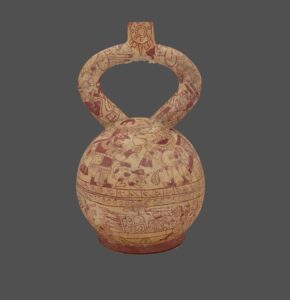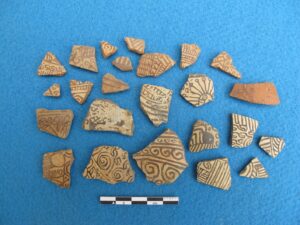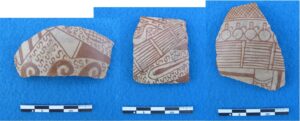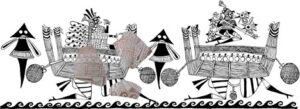Pieces of the Puzzle: Deep Learning for Classifying Moche Themes from Fragments

The Moche or Mochica culture of the North Coast of Peru (250-900CE) are celebrated as having developed one of the richest artistic traditions in the Andean region of South America. The Moche are famed for their depictions of every imaginable facet of daily life in ceramic artifacts known as “Stirrup Vessels”, bottle-like objects that were placed in burials as ceremonial offerings. In the absence of a written language, the study of the complex narrative iconography depicted in these objects forms the foundation of our understanding of the cultural dynamics and ritual traditions of this Pre-Columbian society.

Tens of thousands of these vessels have become part of museum and private collections in Perú and around the world, and continue to be the focus of considerable scholarship, but as these ceramic vessels are quite fragile, complete examples are almost exclusively found in undisturbed tombs. More frequently, only fragments (known as sherds) of these vessels are found in archaeological contexts, allowing for an extremely partial understanding of the complete iconography of the original artifact. However, with so many intact examples in museum collections, it is often possible to compare these fragments to known iconographic scenes.

Assigning a fragment to a particular iconographic scene by a researcher requires expert knowledge dependent wholly on their “connoisseurship” – that is – a researcher’s exposure to the artistic corpus, leading to potential differences in sherd labeling. Inspired by this quandary, Dr. Giles Spence Morrow, Postdoctoral Fellow in the Data Science Institute and Department of Anthropology, sought to answer the question – given the differences in these iconographic scenes but the similarities within any one, could a trained data-driven model provide classification of these fragments with high fidelity?

A diverse team of undergraduates and rising DSI MS students, together with DSI data scientists and Dr. Morrow worked together to answer this question. Using state-of-the-art deep learning techniques, the team was able to train deep learning models to classify the sherds with similar performance to that of domain experts. With the skills gained through collaboration with the DSI, the team is working towards releasing an open source package, deploying the model with an interface for archaeologists in the field, and a journal publication.